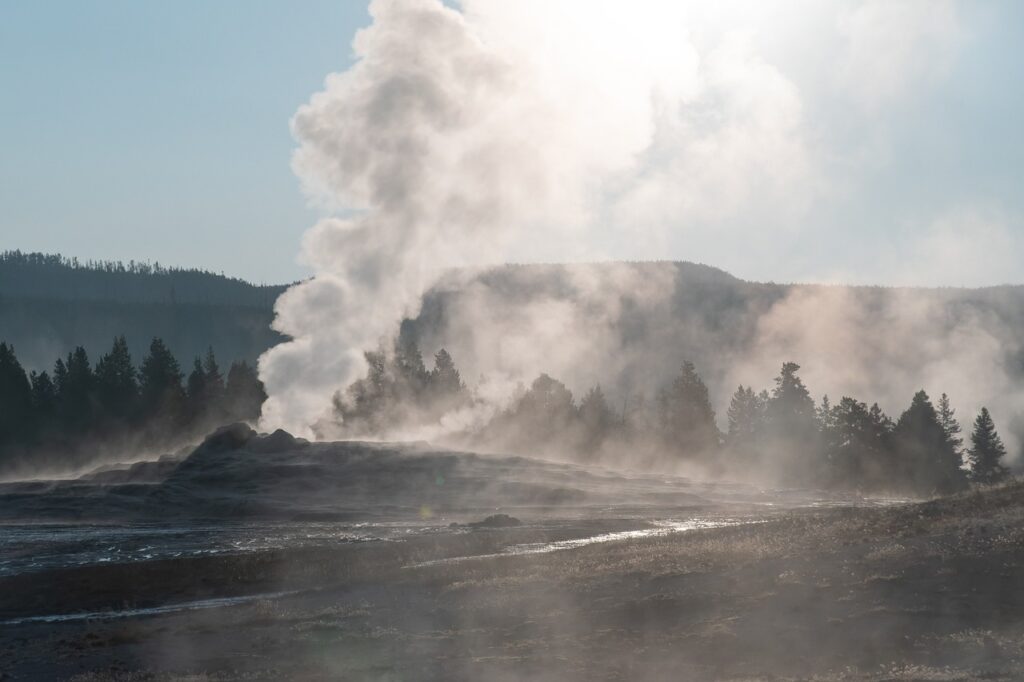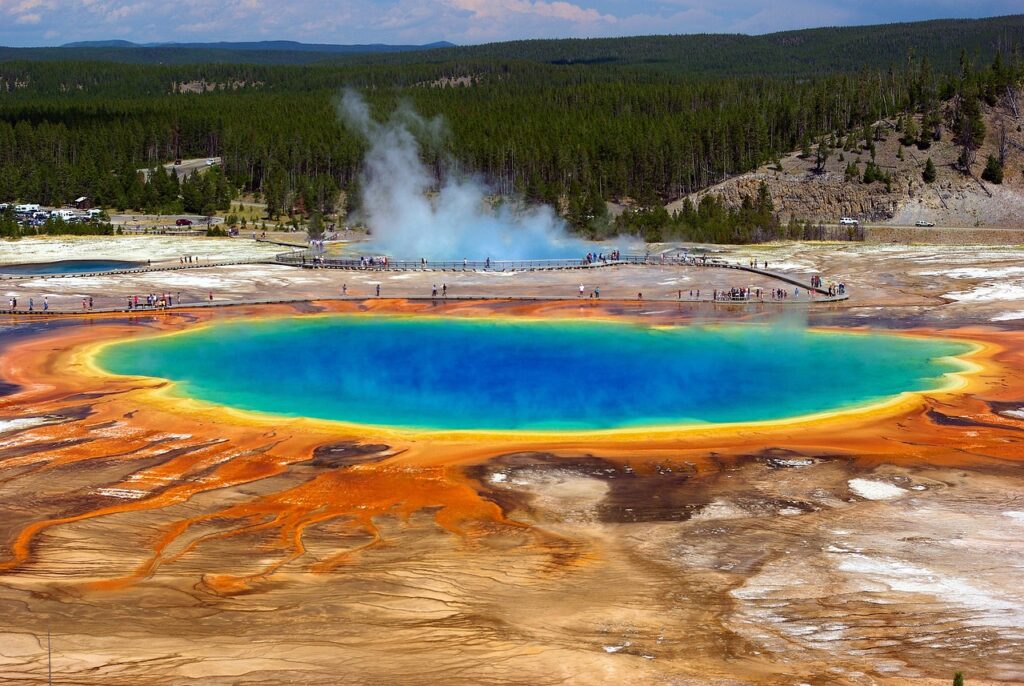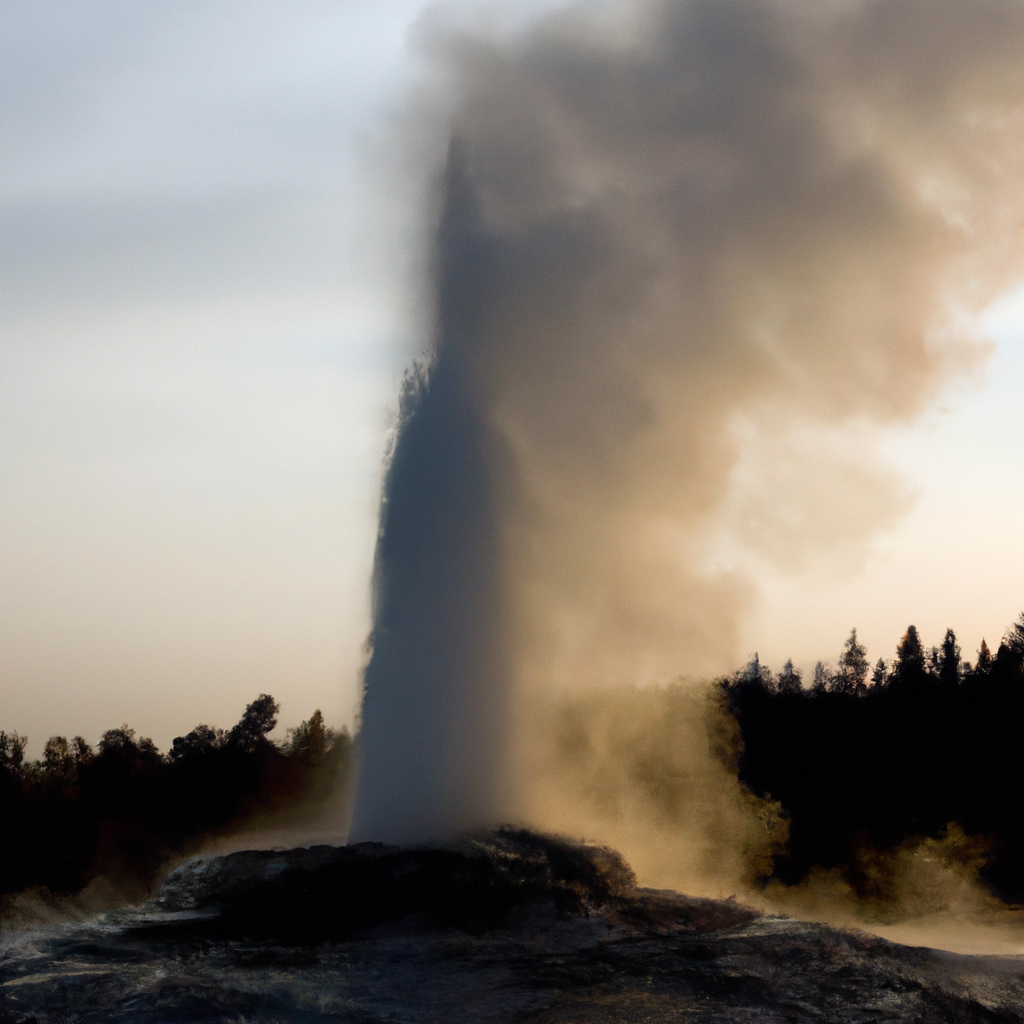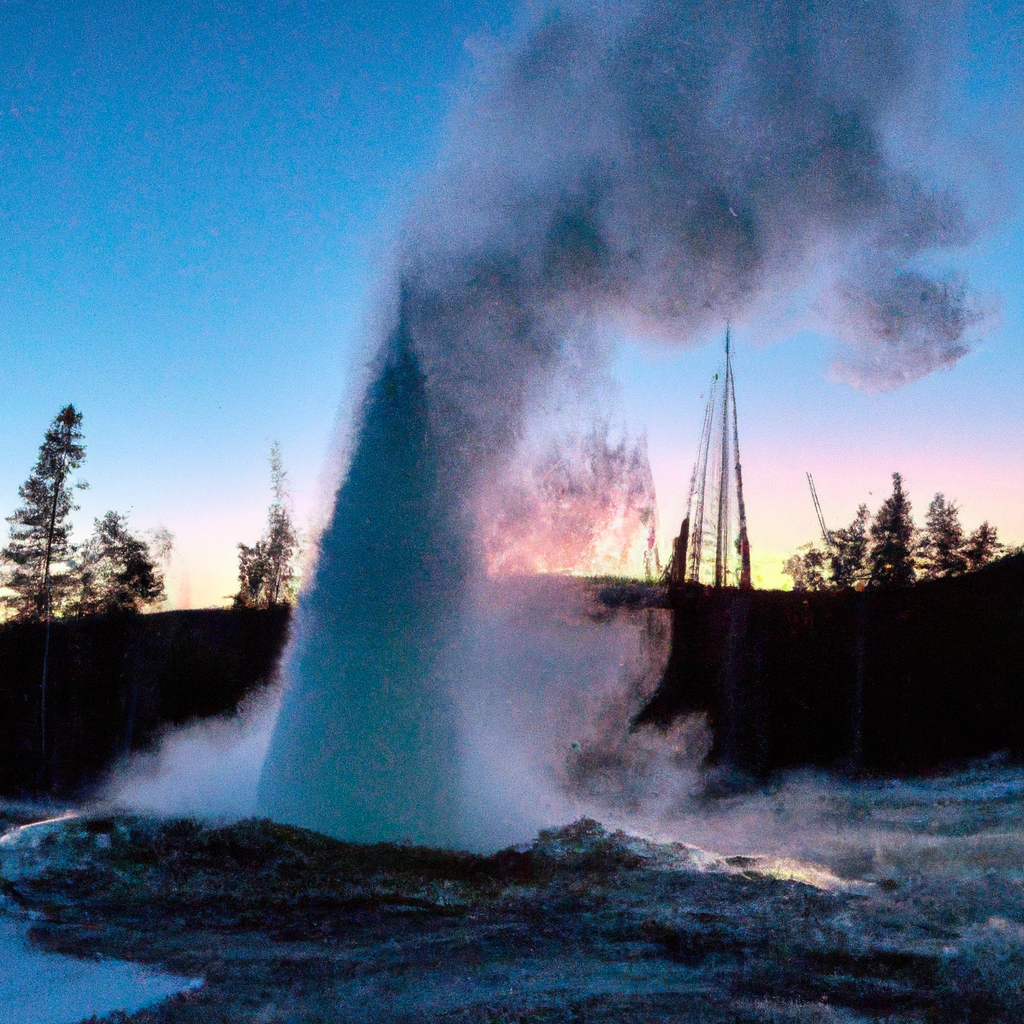Step into the fascinating world of hot springs as we explore the intriguing phenomenon of their varying temperatures. From scorching hot to comfortably warm, these natural wonders have puzzled scientists for centuries. Join us on this captivating journey as we uncover the scientific, geological, and environmental factors that contribute to the diverse range of temperatures found in hot springs around the world. Prepare to be amazed by the wonders awaiting you in the realm of hot springs.
Factors Affecting the Temperature of Hot Springs
Hot springs are a fascinating natural phenomenon that involves the discharge of geothermally heated groundwater. The temperature of hot springs can vary greatly, and there are several factors that contribute to these variations. It is important to understand these factors to fully appreciate the unique characteristics of each hot spring.
1/why-hot-springs-vary-in-temperature-an-exploration-1024x742.jpg" title="Why Hot Springs Vary In Temperature: An Exploration" alt="Why Hot Springs Vary In Temperature: An Exploration" style="max-height: 500px; max-width: 100%;" />
Geothermal Heat
One of the primary factors affecting the temperature of hot springs is the presence of geothermal heat. Geothermal heat refers to the heat that is generated within the Earth’s interior. This heat is a result of radioactive decay, residual heat from the planet’s formation, and ongoing geologic processes.
Heat Transfer
The transfer of heat plays a significant role in determining the temperature of hot springs. There are three primary modes of heat transfer: convection, conduction, and radiation.
Convection is the transfer of heat through the movement of fluid, such as water, due to differences in density caused by temperature variations. In the case of hot springs, convection occurs when heated water rises to the surface, while cooler water sinks.
Conduction involves the transfer of heat through direct contact between objects. In the case of hot springs, it refers to the transfer of heat from the surrounding rocks to the water.
Radiation is the transfer of heat through electromagnetic waves. While radiation does not play a significant role in determining the temperature of hot springs, it is worth mentioning as an additional mode of heat transfer.
Depth of Water Source
The depth of the water source of a hot spring is another crucial factor influencing its temperature. The deeper the water source, the more likely it is to be influenced by the higher temperatures found at greater depths within the Earth.
Aquifer Depth
The depth of the aquifer, which is the layer of porous rock or sediment that contains the groundwater, determines the potential for heat to be transferred to the water. Deeper aquifers tend to have higher temperatures due to the proximity to the Earth’s internal heat.
Geological Structures
The presence of geological structures, such as faults and fractures, can also impact the temperature of a hot spring. These structures can serve as pathways for heat to flow from deeper, hotter areas of the Earth’s crust to the surface.
Stratification of Groundwater
The stratification of groundwater refers to the layering of water with different temperatures within an aquifer. The temperature of the water within each layer can vary depending on various factors, including hydrogeology and proximity to geothermal activity.
Permeability
The permeability of the rocks surrounding the aquifer determines how easily heat can be transferred to the water. Highly permeable rocks allow for greater heat exchange, resulting in higher temperatures in the hot spring.
Rock Composition
The composition of the rocks surrounding a hot spring can also influence its temperature. Certain types of rocks have different thermal conductivities, which affect their ability to absorb and retain heat. Additionally, the presence of radioactive elements in the rocks can contribute to the overall heat output of the hot spring.
Thermal Conductivity of Rocks
The thermal conductivity of rocks refers to their ability to conduct heat. Rocks with high thermal conductivity, such as granite, allow for efficient heat transfer, resulting in higher temperatures in the hot spring.
Thermal Absorption and Retention
Different types of rocks have varying abilities to absorb and retain heat. Rocks with high thermal absorption and retention capabilities can contribute to the overall temperature of the hot spring, as they store and release heat more effectively.
Presence of Radioactive Elements
Radioactive elements found in certain rocks, such as uranium and thorium, can generate additional heat through radioactive decay. This heat output can contribute to the overall temperature of the hot spring.
Water Circulation
Water circulation within the hot spring system is a crucial factor in determining its temperature. The movement and flow of groundwater within the aquifer can influence the temperature by facilitating heat exchange with the surrounding rocks and allowing for the mixing of water with different temperatures.
Groundwater Flow
The rate and direction of groundwater flow can impact the temperature of a hot spring. Faster groundwater flow allows for more efficient heat transfer from the surrounding rocks, resulting in higher temperatures at the spring’s surface.
Faults and Fractures
The presence of faults and fractures in the geological structures surrounding the hot spring can affect the water circulation and heat exchange within the system. These features can provide pathways for water to flow and mix with different temperature zones, impacting the overall temperature of the hot spring.
Aquifer Recharge
The recharge of the aquifer, which refers to the addition of water to the system, can influence the temperature of the hot spring. Freshly recharged water with lower temperatures can cool down the hot spring, while a lack of recharge can lead to increased temperatures.
Aquifer Discharge
The discharge of water from the aquifer to the hot spring is another aspect of water circulation that affects temperature. As water flows from the aquifer to the surface, it can mix with water of different temperatures, thus impacting the overall temperature of the spring.

Size of Reservoir
The size of the reservoir, referring to the volume and surface area of the hot spring system, can affect the temperature. The size of the reservoir determines its heat exchange capacity, stability, and the amount of heat it can retain.
Reservoir Volume
The volume of the hot spring reservoir plays a role in determining its temperature. A larger volume allows for greater heat retention and exchange, resulting in higher temperatures. Conversely, a smaller volume may cool down more quickly.
Ratio of Surface Area to Volume
The surface area-to-volume ratio of the reservoir can also influence the temperature of the hot spring. A larger surface area relative to the volume allows for more efficient heat exchange with the surroundings, leading to higher temperatures.
Heat Exchange with Surroundings
The heat exchange between the hot spring and its surrounding environment is another important aspect to consider. Factors such as air temperature, presence of vegetation, and nearby bodies of water can impact the temperature of the hot spring.
Thermal Stability
The stability of the hot spring’s temperature over time is determined by various factors, including the size of the reservoir, heat exchange processes, and the rate of recharge and discharge. A stable hot spring is one that maintains its temperature within a relatively narrow range.
Weather Conditions
Weather conditions, including air temperature, precipitation, and seasonal variations, can also affect the temperature of hot springs. These factors can indirectly impact the temperature through their influence on the hydrological cycle and heat exchange processes.
Air Temperature
The ambient air temperature can influence the temperature of a hot spring. Warmer air temperatures can increase the overall heat input to the system, resulting in higher temperatures. Conversely, colder air temperatures can lead to a decrease in the hot spring’s temperature.
Precipitation and Runoff
The amount of precipitation and subsequent runoff can affect the temperature of a hot spring. Increased rainfall and runoff can cool down the hot spring by introducing lower temperature water into the system.
Seasonal Variations
Seasonal variations in temperature can also impact the temperature of hot springs. A hot spring may experience fluctuations in temperature throughout the year, with cooler temperatures during colder seasons and warmer temperatures during hotter seasons.

Surrounding Climate
The climate of the surrounding area can have a significant influence on the temperature of hot springs. Factors such as temperature gradients, thermal inversions, and microclimates can all contribute to temperature variations.
Temperature Gradients
Temperature gradients refer to the variation in temperature across a given area. The presence of temperature gradients can impact the temperature of a hot spring by influencing the heat exchange processes and hydrological cycle in the region.
Thermal Inversions
Thermal inversions occur when the temperature of the atmosphere increases with altitude instead of decreasing. These inversions can trap cooler air near the surface, potentially leading to lower temperatures in hot springs located in such areas.
Microclimates
Microclimates are localized climate conditions that differ from the surrounding area. Factors such as altitude, vegetation cover, and geological features can create microclimates that impact the temperature of hot springs within these areas.
Altitude
Altitude plays a role in determining the temperature of hot springs due to its influence on atmospheric pressure, the boiling point of water, and thermal energy loss.
Atmospheric Pressure
As altitude increases, atmospheric pressure decreases. This decrease in pressure can lower the boiling point of water, resulting in lower temperatures in hot springs located at higher altitudes.
Boiling Point of Water
The boiling point of water decreases with decreasing atmospheric pressure. In hot springs located at higher altitudes, the lower atmospheric pressure allows water to boil at lower temperatures, resulting in cooler hot springs.
Thermal Energy Loss
Hot springs located at higher altitudes may experience greater thermal energy loss due to the lower air temperatures and potential for increased wind speeds. This energy loss can contribute to the lower temperatures observed in these hot springs.

Distance from Volcanic Activity
The proximity to volcanic activity can impact the temperature of hot springs. Volcanic areas are often associated with higher temperatures due to the presence of magma and volcanic gases that heat the surrounding rocks and water.
Human Intervention
Human intervention, such as artificial heating of hot springs or the creation of man-made geothermal systems, can significantly influence their temperature. Additionally, contamination and pollution resulting from human activities can have adverse effects on the temperature and overall health of hot springs.
Artificially Heated Hot Springs
Some hot springs are artificially heated to maintain a specific temperature for recreational purposes. These hot springs are often popular tourist destinations, providing individuals with the opportunity to relax and enjoy warm water even in colder weather.
Man-made Geothermal Systems
Man-made geothermal systems involve the extraction of heat from the Earth’s interior for various purposes, such as electricity generation or heating applications. These systems can influence the temperature of hot springs in the surrounding area by altering the natural heat distribution and flow patterns.
Contamination and Pollution
Human activities can result in the contamination and pollution of hot springs, which can have detrimental effects on their temperature and overall health. Pollutants introduced into the hot spring system can disrupt natural processes and contribute to temperature variations.
Altering Natural Flow
Human intervention can also alter the natural flow of hot springs by constructing barriers or redirecting water sources. These actions can impact the temperature of the hot spring by limiting or changing the heat exchange processes and water circulation within the system.
In conclusion, the temperature of hot springs is influenced by a combination of factors, including geothermal heat, the depth of the water source, rock composition, water circulation, the size of the reservoir, weather conditions, the surrounding climate, altitude, distance from volcanic activity, and human intervention. Understanding these factors allows us to appreciate the complex dynamics that shape the unique characteristics of each hot spring. So next time you immerse yourself in a hot spring, take a moment to consider the various elements that contribute to its temperature and appreciate the natural wonders of our planet.
